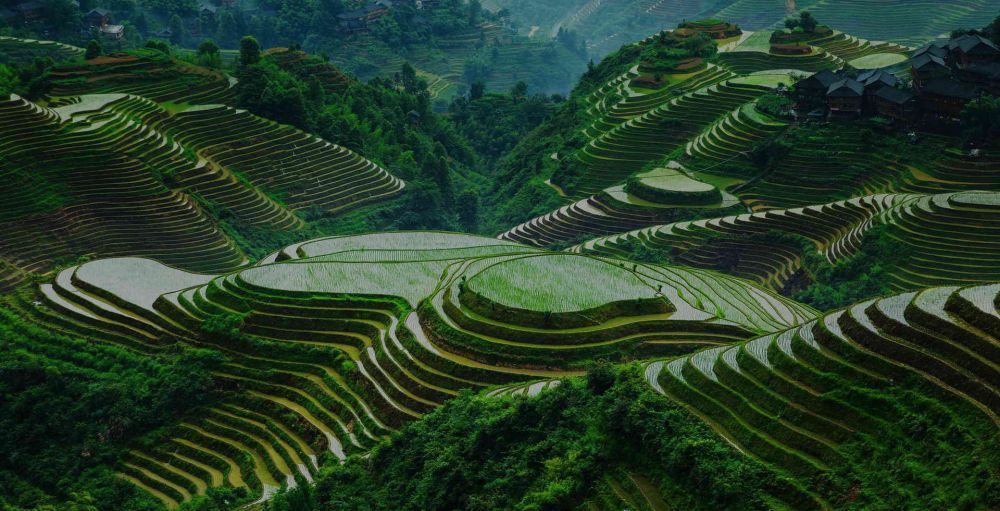

The Longji Rice Terraces, also known as the Dragon's Backbone Terraces, are an awe-inspiring example of human ingenuity nestled in the high-lying areas of Longsheng County near Guilin, China. These magnificent terraces were carved into the hillsides over centuries, and they not only exhibit the symbiosis of man and nature but also are a testament to the agricultural heritage of the Zhuang and Yao ethnic minorities. The history of tourism in this breathtaking location has gradually evolved alongside China's open-door policies and economic development.
The construction of the Longji Rice Terraces began during the Yuan dynasty, around the 13th century, and continued through the Ming dynasty to the Qing dynasty, covering a span of about 700 years. They were built to take advantage of the abundant rainfall and mountainous landscapes that were not suitable for standard flat-field farming. The terraces were built to improve agricultural productivity in the challenging topology of Longsheng.
For centuries, the Longji Rice Terraces were cultivated solely by the local ethnic communities, with limited exposure to the outside world. It was not until the late 20th century, especially after the 1980s when China started reforming its economy and opening up to international tourism, that these rice terraces began drawing attention from beyond China's borders.
Recognition of the Longji Rice Terraces as a major tourist attraction coincided with the rapid development of China's transportation infrastructure, which made remote areas like Longsheng more accessible. The Chinese government and local authorities began promoting the Longji Rice Terraces for their cultural significance and unique landscape, and they initiated conservation efforts to maintain the integrity of the terraces and support sustainable tourism.
As tourism developed, the local communities embraced the trend, providing various services like guided tours, cultural performances, and lodging. The rise in popularity of the Longji Rice Terraces has benefited local residents economically and has fostered a deeper appreciation for the protection of cultural and natural heritage.
In recent years, eco-tourism and sustainable travel have become prevalent, and the Longji Rice Terraces are often highlighted as an outstanding example of these concepts. The terraces offer an off-the-beaten-path travel experience and a chance to immerse oneself in local culture and traditions. Additionally, visitors are increasingly interested in agri-tourism, experiencing rural life, and understanding the processes behind rice cultivation on the terraces.
Photography tourism also peaks during specific seasons, such as when the terraces are filled with water in the spring, creating reflecting pools, or in fall when the harvest hues paint the landscape. Meanwhile, advancements in online marketing through platforms such including social media have allowed the Longji Rice Terraces to gain greater international fame, attracting a broader audience interested in unique and picturesque destinations.
As the tourism industry continues to evolve, the Longji Rice Terraces remain committed to offering an authentic and sustainable visitation experience, ensuring that the landscape's beauty and cultural value endure for future generations. With the right balance of preservation and development, the Longji Rice Terraces are positioned to remain a treasure within China's vast and diverse tourist destinations.